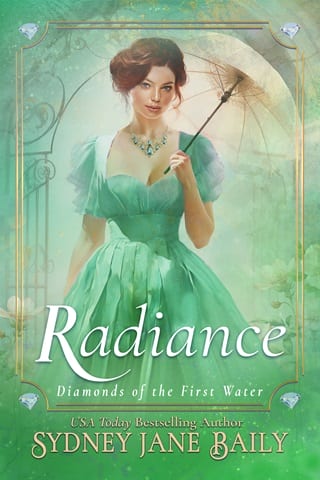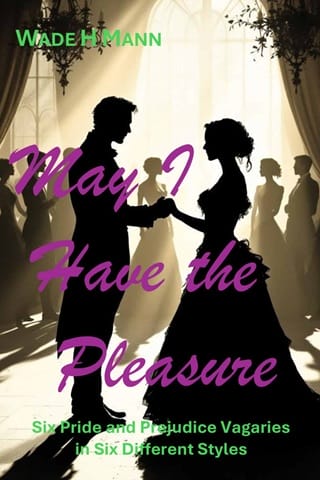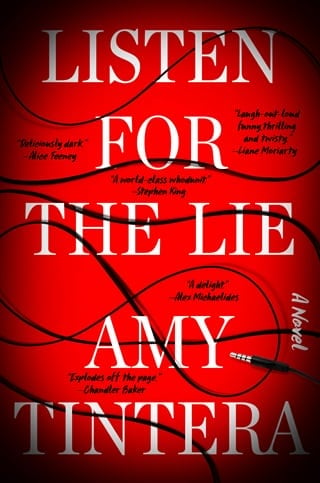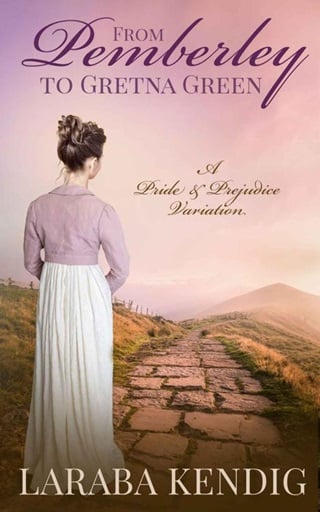Chapter Eleven
E dward felt concern slice through him as Lady Radiance appeared momentarily tongue-tied. Moreover, she seemed to sway slightly. He took a step toward her. Being overcome by the importance of the situation was understandable. While he’d been in the presence of the Queen and the Prince Consort twice now, he, too, felt it was a momentous occasion.
Finally, Lady Radiance answered.
“Yes, Your Majesty. I saw it a few times when it was on display. If I may say so, the entire exhibition was a grand treat for which I am certain all your subjects are grateful.”
“My husband is the one to thank,” the Queen said, brushing aside the lady’s gratitude. “Do you know what The Times said about my diamond when it was first unveiled?” Her Majesty asked.
Another hesitation, and then Lady Radiance said in a quiet voice, “I do, Your Majesty.”
“Can you repeat it for us? If not, then I shall have to ask that a copy be brought here.” Queen Victoria sounded tweaguey.
Edward winced. He knew exactly what it said, and he would wager Lady Radiance did, too. Anyone interested in gems would have read it and felt a pinch of shame for whomever wrote the nasty opinion that upset the Queen.
As expected, Lady Radiance nodded. Speaking softly, she said, “The review was something along the lines of the Koh-i-Noor being unsatisfactory.”
“Much worse than that,” the Queen said swiftly.
And then, to Edward’s surprise, Queen Victoria cleared her throat and recited from memory, “‘Either from the imperfect cutting, the difficulty of placing the lights advantageously, or the immovability of the stone itself, which should be made to revolve on its axis, few catch any of the brilliant rays it reflects when viewed at a particular angle.’”
The Prince Consort coughed. “That’s why we moved it, my Queen.”
“Imperfect cutting!” the Queen exclaimed, bringing her fist down upon the arm of her throne. Then she took a breath. “Yet The Times was correct. No matter that they were rudely impudent.”
When next she spoke, she addressed him and Lady Radiance at the same time.
“Lord Dalhousie, my trusted Governor-General who was instrumental in bringing the diamond to Great Britain, has said as much. He, too, criticized the first exhibit, saying our beloved Mountain of Light shows poorly for being a rose and not a brilliant cut.”
“It cannot sparkle like the latter,” Lady Radiance pointed out. “It isn’t the diamond’s fault, Your Majesty. A new cut shall make all the difference.”
Edward thought it ironic that Lady Radiance had a sister whose name was close to the best cut but didn’t think it something he should share. No matter one’s enthusiasm for the topic at hand, one simply didn’t treat these two royals as regular people and start chatting about incidentals.
“Mr. Dalhousie was also correct in saying we ought to have displayed it on a table covered with a black velvet cloth,” the Prince Consort said. “Nor should it have been attended on either side by the other two diamonds that came with my wife’s armlet. Never mind. With the help of our specialist in light, Sir David Brewster, our Crown Jeweler, Mr. Garrard, and our geologist from King’s College” — he nodded at Edward — “we shall not muck it up again.”
Briefly shocked at being included among the stellar gentlemen who would steer the diamond’s cutting, Edward said, “I am acquainted with Sir Brewster.” A mere week earlier, they’d discussed the singular iridescence of opals.
“I have attended one of his lectures,” Lady Radiance spoke up, surprising him. “Sir Brewster knows everything about reflection and refraction, and if anyone can direct a jeweler to bring out the best in the Koh-i-Noor, it will be him.”
The prince looked impressed. “Unfortunately, Sir Brewster thinks the diamond is flawed at its very heart. It has yellow speckles in its core, and one of these has marred its ability to refract light.”
“That is one of the reasons, Mr. Lockwood, we want you to take another look at it.”
Edward nearly took a step back. He doubted he would come up with a different conclusion than the esteemed Sir Brewster. His concern must have shown upon his face, for the Prince Consort added, “He thinks cutting it presents a very high risk of destroying the diamond entirely.”
The Queen made an exclamation of apprehension, but Prince Albert continued, “Sir Brewster believes, if it survives the cutting intact, then the Koh-i-Noor will, at the very least, lose so much of its size as to make it ... no longer the impressive stone it is.”
All at once, the Queen rose to her feet. “I find the whole situation incredibly draining. There are too many matters going awry, from the loss of two jewels to how best we can improve the Koh-i-Noor without ruining it and, most importantly, without someone exchanging it for a fake!”
“I shan’t let that happen, my love, and I am confident that, with the help of Mr. Lockwood, we shall not only recover what has been stolen but determine the best course for your diamond.”
Edward wasn’t so certain but offered a nod of agreement anyway.
The Queen was clearly finished with the discussion.
“I know you shall consult with Mr. Garrard and come up with the best solution for everything. Thank you for coming,” she said. Then their diminutive monarch turned and left the way she had come, as Edward bowed low and Lady Radiance dropped into a curtsy beside him.
The Prince Consort watched her go. “This has become an extreme annoyance to Her Majesty,” he said softly as if it pained him. “And thus, a thorn in my side as well.”
“Are we only to speak of the Koh-i-Noor today, Your Royal Highness?” Edward asked. “During the meeting, I mean?”
Prince Albert continued to stare after his wife. “Gutes Fr?uchen,” he murmured softly.
Edward exchanged a glance with Lady Radiance, suddenly feeling as if they were intruding upon something private. She raised a shoulder in return, looking equally uncomfortable at the Prince Consort exposing them to a private nickname, my little wife .
Finally, Prince Albert turned.
“Most of the men in that room today do not know about the fake jewels. Thus, please keep the discussion solely on whether the Koh-i-Noor can be cut without losing its physical integrity.”
Prince Albert gestured toward Lady Radiance. “If you and Lady Radiance are able to figure out how the royal jewels were meticulously copied and switched, then we shall be forever in your debt. I don’t know if you can, nor if anyone can.”
“Your Royal Highness, Mr. Hope told us about Mr. Minton from Garrard’s,” Edward said, “but he didn’t mention precisely the coronet nor the House of Neble.”
Prince Albert offered a wry smile. “He doesn’t like to speak of it because of a familial connection through Mr. Neble’s deceased wife.”
“Did someone from the House of Neble also go to jail, Your Highness?” Lady Radiance asked. “And was Mr. Minton released since another forgery happened after he was convicted?”
Edward thought her as thorough as anyone from the Metropolitan Police.
“As far as we know,” the Prince Consort answered her first question, “Mr. Neble works alone, and his trustworthiness is beyond doubt. Nonetheless, he was interrogated, just as Mr. Minton was, but we refrained from casting charges against him. Which brings me to your second question, and the answer is no. Mr. Minton is the only suspect we have. He had a trial and was judged guilty.”
Edward could see by Lady Radiance’s face that she was going to start a debate with the Prince Consort. Something about stubborn redheads came to mind, but he had believed it was merely an old wives’ tale — until that moment. One did not argue with His Royal Highness. He began tapping his chin, but she wasn’t looking at him.
However, the Prince Consort sighed. “Nothing but a mystery. We know it wasn’t Mr. Neble. He is wealthier than Midas, with no reason to do anything so egregious this late in his career. Yet he cleaned the coronet himself, swearing they were all the genuine, original gems when he had finished.”
And then, Prince Albert bid them good day, and they each sank into their respective postures of courtesy while he followed the Queen, leaving Edward and Lady Radiance still looking at the floor.
They straightened at the same moment. Hardly a breath later, the door at the other end of the room opened, and the same footman who’d led them there returned.
“This way, please,” he said.
As soon as they entered the hallway, Lady Radiance’s maid fell in step behind them, and they walked in silence. Edward began pondering what they’d been told. It seemed inconceivable that two different people could get away with the same type of crime — forgery — on two separate occasions.
He nearly walked into a porcelain vase as he considered and dismissed the possibility that there was more than one master forger of gemstones.
“Careful,” Lady Radiance advised, somehow setting her hand upon the vase and steadying it before it toppled.
The footman turned with a raised eyebrow.
“Please, my lady, do not touch any of the royal collection.”
Lady Radiance snatched her hand from the porcelain before giving Edward an exasperated glance.
Just when he would have apologized, the footman added, “There may be many temptations along the way to the corner Yellow Drawing Room, as we call it.”
Edward could only shrug his apology as she gritted her teeth beside him.
They followed the liveried man along one of the palace’s extensions. Thus, without going outside, they crossed the width of the central courtyard and entered the famed architect Edward Blore’s new east wing. The Queen’s request for more space, including guest rooms and nurseries, had necessitated moving the Marble Arch that previously fronted Buckingham Palace so the new wing could be built.
Briefly, Edward wondered how anyone living in a palace could need space. And then they entered a light-filled room down the center of which was a long table.
Many of the furnishings had been brought from the Royal Pavilion at Brighton when the Queen sold the seaside palace to pay for the addition. Thus, the room wore a festive Oriental appearance.
Around a long, polished table sat men he knew, and some he didn’t. As soon as they registered the fact that there was now a lady present, all five rose to their feet en masse.
“Mr. Lockwood and Lady Radiance,” announced the footman as if they were entering a ballroom at Devonshire House.
Not that Edward had ever been to a ball there, but he could imagine.
“Gentlemen,” Lady Radiance said, “please resume your seats.”
Quick as a whip, she took the closest chair to put them at ease and allow them to do as she bid.
The next empty chair was on the other side of the table, and Edward strolled around to it, nodding to the Crown Jeweler, Sebastian Garrard, bowing low to the Duke of Wellington as well as to Lord Cawdor, Director of the British Museum. They nodded back, and then he introduced each one to Lady Radiance, as well as Mr. Chapman, the man who removed the Koh-i-Noor from the armlet under Mr. Garrard’s supervision, and Lord Exeter, the Queen’s current Lord Chamberlain, whom the lady knew through her father, and lastly, the distinguished mineralogist Professor Tennant, who’d already studied the diamond and written about it extensively. More nodding occurred.
There was a stranger who was introduced by Garrard as Mr. Rathmond, and Edward knew him by name to be a gem broker.
“My apologies for keeping you waiting, gentlemen,” Edward said.
“Not to worry,” Garrard returned. “Obviously, this lovely lady was worth our patience.”
The men all chuckled politely, but Lady Radiance didn’t look pleased at being blamed for their tardiness. Yet the Crown Jeweler could not disclose to the rest of those gathered that Edward had been summoned to speak with the Queen and Prince Albert before the meeting. Moreover, he had no idea of Lady Radiance’s involvement. Thus, Edward was forced to let the little jest stand.
“I shall get you caught up,” Garrard said. “We were discussing the best way to cut the Koh-i-Noor with the least loss of weight.” Then he nodded to Lord Cawdor. “Show them.”
To Edward’s amazement, Cawdor flipped over a folded cloth in front of him and exposed the Koh-i-Noor to the gaze of all those gathered. Lady Radiance gasped. Even more surprising, the museum director picked it up and tossed it toward Edward, who caught it midair.
At once, he realized what it was.
“Apsley Pellatt’s flint glass model,” Edward said.
Having seen it before, he took only a brief glance, then said, “Lady Radiance, would you like to examine it?”
Despite a general muttering, which he ignored, Edward sent it skittering across the table toward her. As he’d expected, she set her gloved hand upon it easily before it could fall over the edge onto her lap.
Raising an auburn eyebrow, she lifted her hand off the stone and took a look as every head turned to watch her. However, she didn’t pick it up. Rather, she reached under the table and drew up her reticule, opened it, and in the next instant, fished out a pair of magnifying spectacles.
After slipping these on, only then did she pick up the stone and study it. When her gaze next found Edward’s, he nearly laughed at how her eyes appeared like two magnificently large emeralds.
“I saw this reproduction at the exhibition, too,” she said. “If it had been in a more prominent display, I vow people would have flocked to the glass model in equal number as they did to the diamond. Despite having the same irregular cut as the Koh-i-Noor, its clarity is superior, far more like water than the real jewel. Far more even than most glass due to Mr. Pellatt’s manganese oxide blend.”
In the silence that followed, she put it back onto the table. Edward wondered if Lady Radiance realized she had awed the others into silence.
“Alas,” she added, “with its inferior refraction index, it can never have a diamond’s dispersion. No matter the cut, glass merely looks like ... well, like glass. No internal reflection, thus no sparkle.”
“You are correct,” said Chapman, taking up the model. “I haven’t seen the Koh-i-Noor since I removed it for Mr. Pellatt to copy, but even a diamond thusly flawed in both core and cut is more pleasing than this glass, no matter how well made.”
“Speaking of cut,” said Garrard, “let us return to the discussion of how the Koh-i-Noor shall be improved. I greatly admire Sir Brewster, and I am aware his examination of the diamond led him to inform Her Majesty and His Royal Highness that it cannot be improved. Or, if it is, then it will be at the sacrifice of much of its size.”
He let that sink in for any who hadn’t pondered the grave decision.
“However, I have examined it carefully, as has my brother.” Garrard took a breath. “We believe it can be done and have told the Queen such.”
“Agreed,” said the jeweler Chapman, but a fellow geologist, James Tennant, caught Edward’s eye. They shared a professional moment of doubt.
“However,” continued Garrard, “we must consult diamond cutters from Amsterdam. My brother and our partner, Mr. Spilsbury, concur. They are the best for handling this delicate task.”
A general outcry ensued. Lady Radiance appeared clearly surprised by the uproar. But these men were as British as they came. To admit to the world that they hadn’t a cutter in all the United Kingdom who could match the skills of a foreign jeweler was an affront. And perhaps their pride was even more wounded by the fact that a beautiful lady was in the room.
Edward decided to speak up. “I don’t think Mr. Garrard is being unfair. We know British jewelers are unsurpassed with design and with goldwork. One need only look at Rundell and Bridge’s famed punch bowl, which the Queen adores, to be in absolute agreement on that fact. Yet we’ve seen the diamond cutting from the Continent. Moreover, we can all understand why the Queen would wish for only the most skilled.”
The others turned their boiling pots to simmer.
“As long as it is all overseen by our Crown Jeweler,” the Duke of Wellington said, nodding to Garrard.
“Certainly not left in the care of the Dutch,” suggested the museum director.
The discussion continued in earnest, seemingly going around the same points, until Edward longed for a cup of coffee and the peace of his workroom.
Lady Radiance, who had listened attentively, seemed fairly bursting to say something. He didn’t have to wonder long what it was. In the masculine atmosphere of one man interrupting or speaking over another, her lilting voice smoothed the rough tenor at the table the way a lap’s mill smoothed a ruby.
“Is the intent to retain as much size as possible, balancing that against the number of facets?” she asked.
“Some think the weight alone is the Koh-i-Noor’s glory,” Garrard said. “It is, after all, one of the largest in the world.”
“But if it is ugly, what is its value?” asked Professor Tennant, now holding the model up to the light. “If we prefer the clarity of this glass model, then the diamond may as well be as big as a rock from my garden.”
Rathmond, the gem dealer, perhaps invited for his vast knowledge of gemstones and also of jewelers worldwide, nodded in agreement. He took notes, remaining silent instead of vying to be an integral part of the process that would make Queen Victoria love her precious diamond as she should.
Edward was about to ask him his opinion on the Dutch but was halted by the Lord Chamberlain’s next question.
“No offense intended, my lady, but why are you here?”
 Fullepub
Fullepub 



